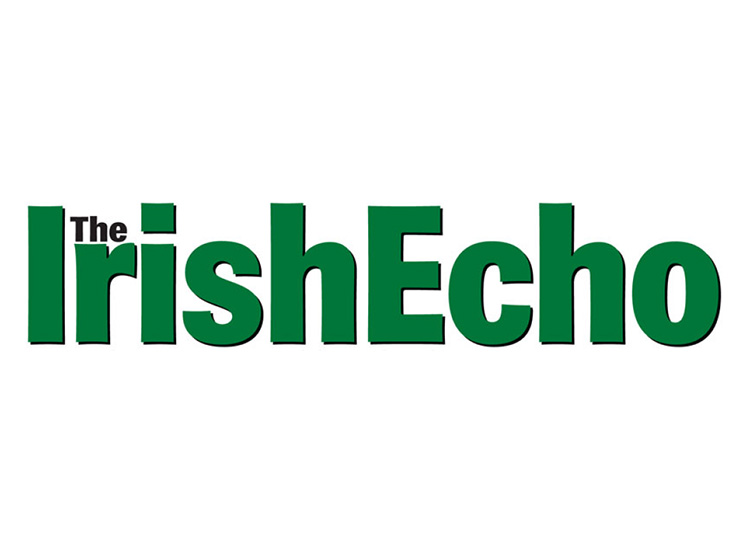Temple Bar. PHOTO: TIM REILLY
By Colleen Taylor
TradFest, held the week through Sunday, Jan. 27, made Dublin the place to be for music lovers. What started out as a small-scale niche festival in 2006—a first attempt to flood the capital with trad tunes—has become one of the premier Irish music events of the year, including both folk music monarchs and young upstarts with bright futures. Most impressively, Temple Bar TradFest captured all aspects of Irish music’s redolence—the historical narrative of diaspora, the mythic, otherworldly aura and the casual, conversational pub set. For me, what distinguishes TradFest from other traditional Irish music festivals is its forward-thinking, forward-moving ethos. The lineup, community, themes and even the very infrastructure of the Festival look ahead to what Irish music could be, as much as they look back and honor what it once was.
TradFest’s progressive momentum was most palpable at a new talent showcase co-sponsored by Culture Ireland, featuring six up-and-coming acts. This was not an All-Ireland in miniature, but rather, a demonstration of fresh creativity—the raw materials of craft and idea before they are polished and neatly assembled into artwork. Style ranged from strictly trad to Joni Mitchell homage and yes, even synth. See why I said progressive? The rookie acts had applied to Culture Ireland to perform for a select group of international and national music buffs, and there was an act suited to everyone in attendance, the music as diverse as individual taste. For me, there were some solid stand-outs—names that will, if you pay attention, appear in this column again.
Due stateside
Amongst the “strictly trad” denomination, I was captivated by two bands: Backwest and Boxing Banjo. If truth be told, these were some of my favorite trad acts across the festival at large. Backwest is a four-piece Galway band that literally woke me up with their first set of reels. Both their live performance and their studio work projects each instrumentalist’s individual flavor amidst the perfect synchronization of the group—no easy feat. You feel like you can hear each instrument on its own in one ear while you take in the total, comprehensive sound of the group with the other. Of course, music is always better live, but you can still get a sense of this band’s dynamic sound on their first album, “The Long Walk,” released in 2017. Backwest announced their second album release as part of TradFest, and inkling says they will bring their second album stateside soon.
Whether we care to admit it or not, deep down everyone loves a boy band. And when that boy band actually has talent—which so rarely, if ever, happens in mainstream pop music—well, that’s irresistible. Boxing Banjo, made up of three young men from Mayo and one from Limerick (they like to be very clear about this) is boy band-meets-trad band—a playful, bold explosion of reels and jigs. However, I feel guilty using the term “boy band,” which implies a certain superficiality or inexperience completely incongruous with this band. “Young man band” is a better, if less catchy, classification, and it rightly encapsulates Boxing Banjo’s mixture of equal-parts mature music and youthful exuberance. These guys are still delightfully green, but they are complete naturals on stage: they look like they wouldn’t want to be anywhere else in the world, a feeling that naturally reciprocates in the audience. Unlike with other traditional bands, there is nothing restrictive about Boxing Banjo—the sheer movement they exhibit onstage is infectious and almost dance-like. Their instruments are not only tools for the tunes but instruments of communication, as they dialogue nonverbally via accordion, fiddle, banjo, and guitar. “The Blackthorn Stick,” for example, which you can hear on their debut album, “Round #1,” released early last year, makes the music talk.

Liz Carroll and Jimmy Keane.
Only in Dublin
Finally, Cua is name you’ll hear me mention again in this column—a trad/folk/Americana three-piece powerhouse with roots in County Laois. This band has that special ability that never fails to impress me: to transport their listeners to other times, other places, and really re-root them. Cua’s haunting, deep acapella harmonies brought me to 19th-century fields and Victorian era factories and workhouses, creatively accessing the emotions and imaginations of those nameless historical figures. Their sound is earthy, powerful, and, as cliché as it might sound, “real.” With an album upcoming in October, fingers crossed Cua will cross the Atlantic for their next tour.
TradFest was full of surprising juxtapositions. For example, seeing hipster, too-cool band the Young Folk play to a crowd of unsuspecting tourists in Fitzsimon’s was a bizarre treat that could only happen at a Dublin event like this one. Gradually, the band’s easy acoustic-string sound warmed the room and smiles grew on the faces of audience and band members—a pairing of rural roots onstage and international urban setting. One of the most magical moments happened when singer-songwriter Ailie Blunnie, whom I’ve written about before, took the stage at the Workman’s Club. I watched her charm and convince a room full of orthodox trad fans that Irish ballads can—and should—go to new places, even a synth board. Her exciting pairing of traditionally inflected vocals and electro-synth instrumentals became a welcome disorientation that represented TradFest’s willingness to breach boundaries and mobilize the “traditional.”
What also makes Temple Bar TradFest remarkable in its use of Dublin’s most historical and austere spaces, from City Hall to St. Patrick’s Cathedral. These tourist attractions-turned-music venues were not just significant for aesthetic and acoustic reasons, but for symbolic ones as well. Two of Chicago’s most accomplished traditional musicians, fiddler Liz Carroll and accordionist Jimmy Keane, played a fantastic set to a sold-out room in Dublin City Hall, and as I saw it, wrote new narratives over the building’s structural history. Built in the late 18th-century and designed according to London’s neoclassical trends, the Pantheon-like building projects imperial opulence, making it impossible to ignore Ireland’s colonial past. But then, Liz Carroll and Jimmy Keane filled that massive dome with their charming Midwest accents, their superb tunes that came from the West of Ireland via Chicago, and wrote an optimistic epilogue over what that edifice represents, set the tune of a jig. The history of the space said these two humble, unpretentious, and utterly skilled traditional players did not belong there, but their lively music and livelier stories of Irish emigres in Chicago, echoing up through the dome, said they did. It was reverse diaspora, post-postcolonialism in its best form.
Folk’s best voice
That TradFest landed Kate Rusby, who rarely plays in Ireland, as its headline act speaks to the Fest’s rising reputation and its willingness to extend the parameters of “traditional Irish fest.” Words will not do Rusby’s performance in St. Patrick’s justice, so I won’t even try it—but those in attendance can agree something almost supernatural occurred in the room that night. To hear best voice in folk music (as far as I’m concerned) in a majestic space like St Patrick’s was a truly spiritual experience, especially when she sang her most moving and enchanting songs, like “The Lark,” “Hunter Moon,” and especially “Bitter Boy,” written in memory of her uncle, which moved Rusby herself to tears. Such a voice in a space like that must have softened even the hard, cynical, ghostly heart of Jonathan Swift. Rusby sang the “Wild Mountain Thyme” to finish her concert, and when the audience joined her in the chorus of “Go Lassie Go,” the global traditional music community really came to life there in St. Patrick’s—one could almost feel the links tightening across the globe and across time. I don’t think I’ve ever heard anything more moving.
A few years ago, TradFest was something I might check out if I had the time, but now it’s something I cannot miss—and you shouldn’t miss it either. January is a perfect, inexpensive time of year to visit Ireland, and it will cure the worst of post-holiday blues. This week-long event celebrates the Irish traditional influence at an international scale, uses Dublin as a historical resource, resists stringent regionalism, forges a friendly community on Dublin’s busy streets, and embraces innovation in folk music today. Simply put, there’s nowhere else you will want to be in late January 2020 than Temple Bar, listening to the best Irish music can offer.








